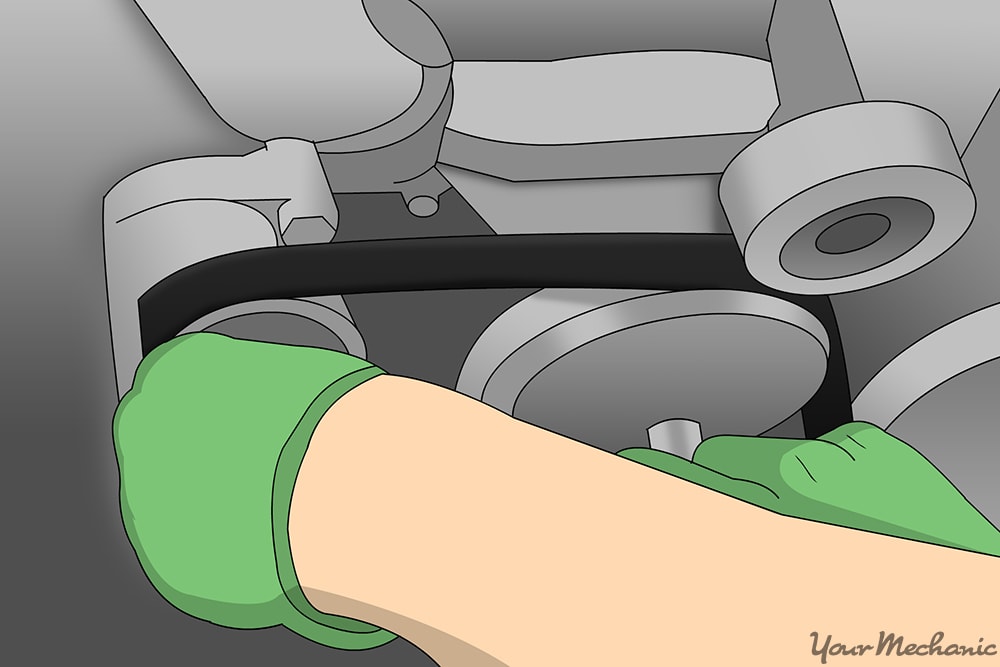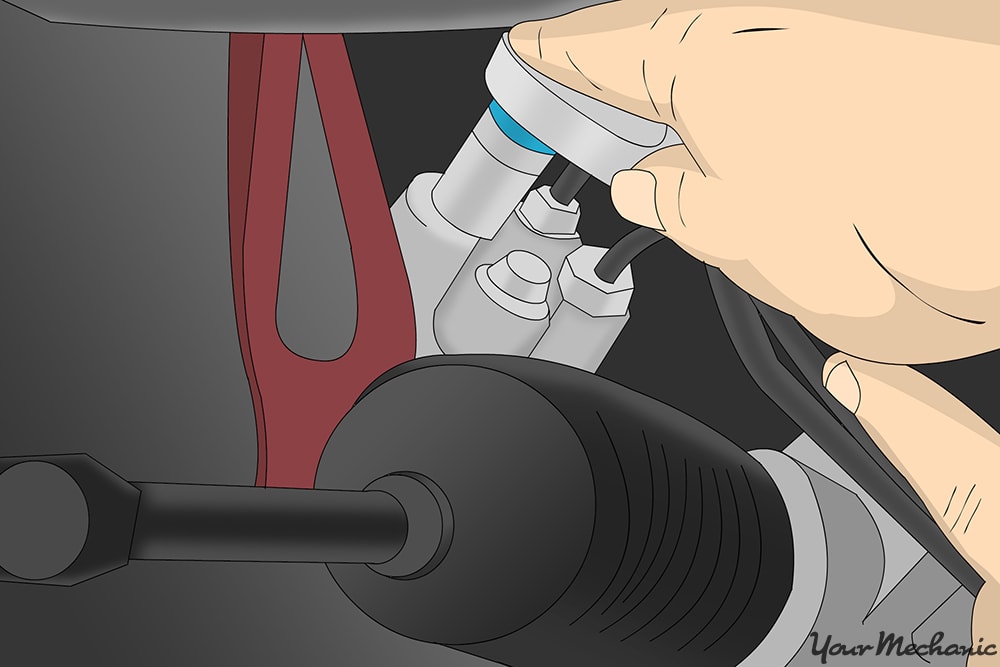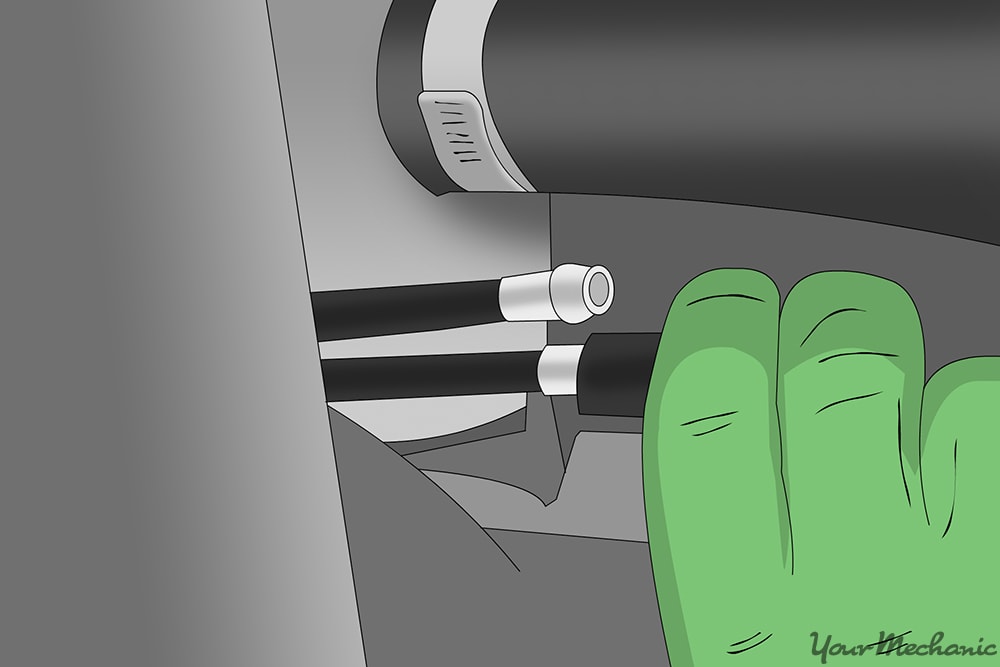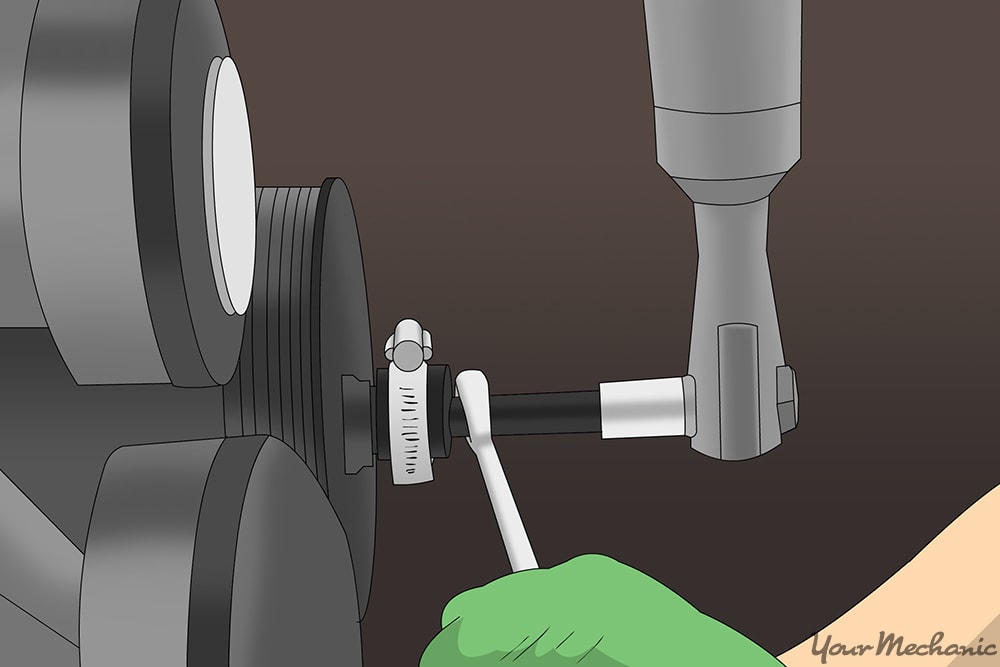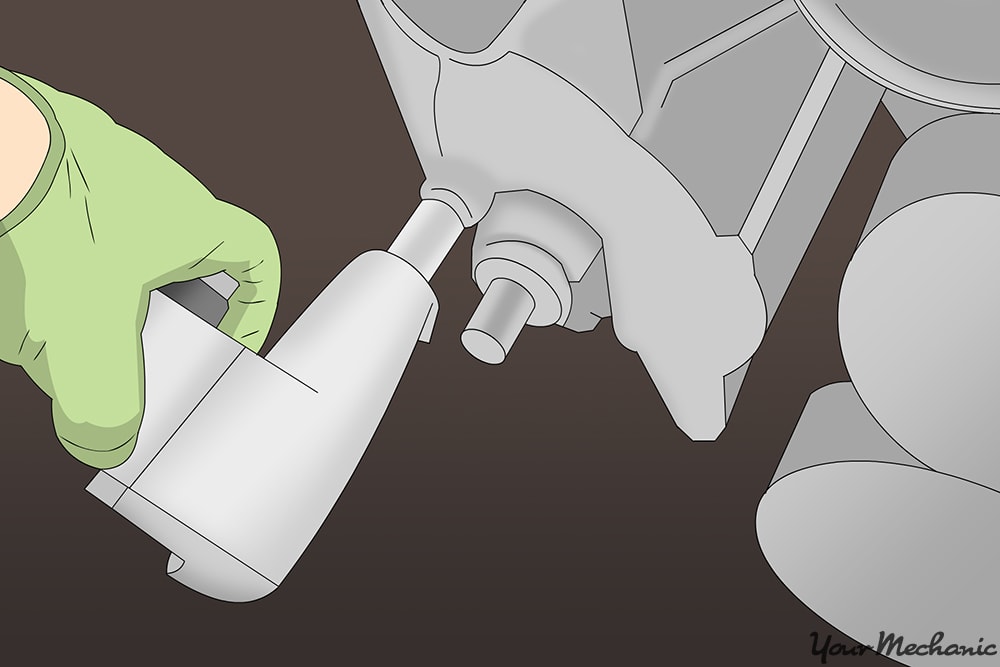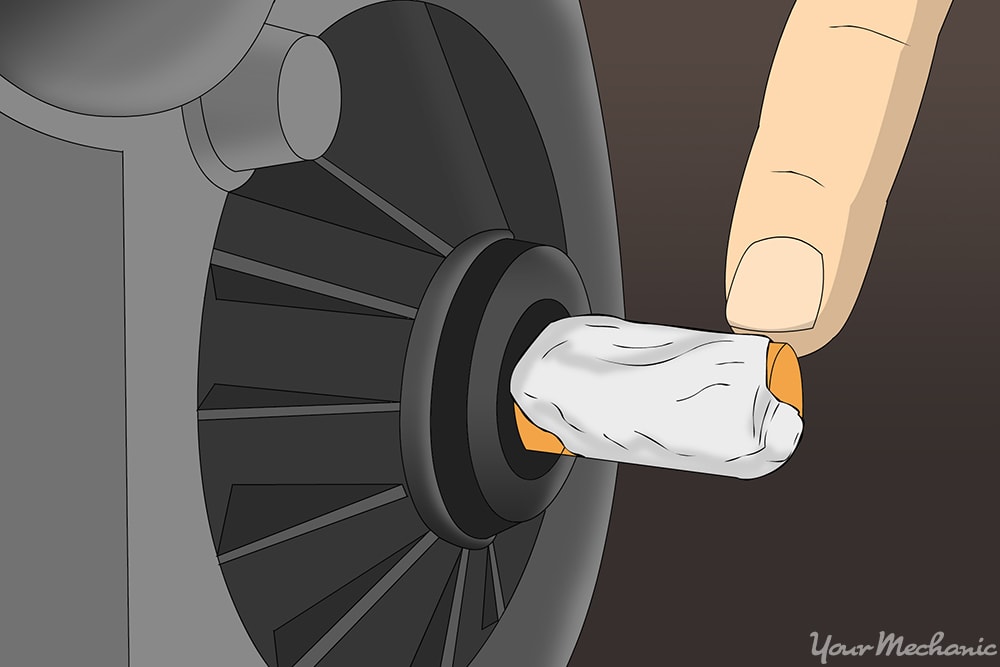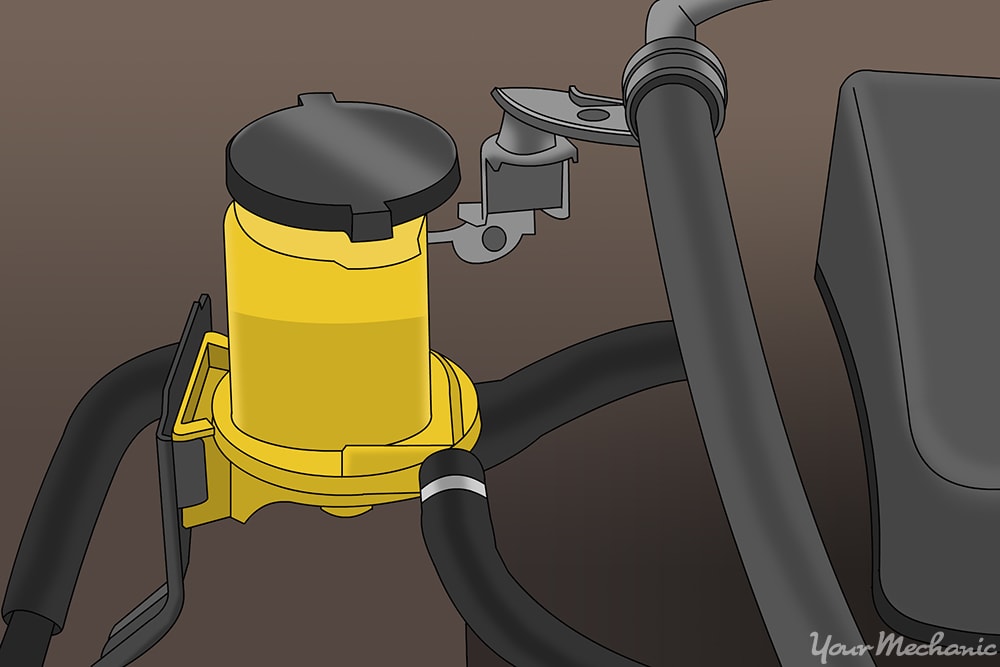

Most of today’s vehicles are equipped with an updated version of a hydraulic power steering system that was introduced in 1951. Although the design and connections have changed over the years, the basic process of how power steering fluid is circulated through this hydraulic system remains the same. This has been and is often still powered by a power steering pump.
In a hydraulic power steering system, fluid is pumped through a series of lines and hoses to the steering rack which moves as the driver turns the steering wheel to the left or right. This added hydraulic pressure make steering the vehicle much easier and was a welcome relief. Today's modern power steering systems are electrically controlled by the power steering assisted components attached to the steering column or the box itself.
Before it was replaced by EPS systems, the power steering pump was attached to the engine block or a support bracket near the engine. The pump is driven by a series of belts and pulleys attached to the crankshaft center pulley or to a serpentine belt that drives multiple components including air conditioning, alternators, and the power steering pump. As the pulley spins, it turns an input shaft inside the pump which creates pressure inside of the pump's housing. This pressure is applied to the hydraulic fluid inside the lines that connects the pump to the steering gear box.
The power steering pump is always active when the vehicle's engine is running. This fact, along with the reality that all mechanical systems wear out overtime are major factors causing this component to break or wear out.
Under most circumstances, the power steering pump should last about 100,000 miles. However, if the power steering belt breaks or other internal components inside the pump wear out, it is rendered useless, requiring either a new belt, pulley, or a new pump. When the pump is replaced, usually mechanics will replace the primary hydraulic lines that attach the pump to the fluid reservoir and the steering box.
Note: The job of replacing the power steering pressure switch is rather simple. The exact location of the power steering pump varies based on the manufacturer's specs and design. Always refer to the vehicle's service manual for the exact instructions on replacing this component and make sure to follow their steps for servicing ancillary components that make up the power steering system before completing the job.
Warning: Make sure to wear safety glasses and gloves when working on this project. Hydraulic fluid is very corrosive, so it's advised you wear plastic gloves when replacing this component.
Part 1 of 3: Determining the symptoms of a bad power steering pump
There are several individual parts that make up the entire power steering system. The primary component that supplies pressure to the hydraulic lines is the power steering pump. When it breaks or is starting to fail, there are a few warning signs:
Sounds coming from the pump: it's common for the power steering pump to make grinding, clunking, or whining sounds when the internal components are damaged.
Smell of burning power steering fluid: in some instances, the power steering pump creates excess heat if some internal parts are broken. This might cause power steering fluid to heat up and actually burn. This symptom is also common when seals on the power steering pump crack, causing power steering fluid to leak from them.
In many cases, the power steering pump will not function because the serpentine or drive belt is broken and needs to be replaced. It's also common for the power steering pulley to break or wear out. If you notice these symptoms and have inspected the power steering pump, replacing this component is the best course of action. This job is rather simple to complete, but you should always read the exact procedures your vehicle manufacturer recommends in the service manual.
Part 2 of 3: Replacing the power steering pump
Materials Needed
- Hydraulic line wrenches
- Pulley removal tool
- Boxed end wrench or ratchet wrench
- Drain pan
- Replacement power steering drive or serpentine belt
- Replacement power steering pulley
- Replacement power steering pump
- Safety equipment (safety glasses & plastic or rubber gloves)
- Shop rags
- Threadlocker
According to most experts, this job should take about two or three hours to complete. Make sure you give yourself enough time to work on this project and try to complete it all on the same day to avoid missing steps.
Before you start on this job, make sure you have a good supply of shop rags placed under all hydraulic lines that you might remove. Hydraulic fluid is very difficult to remove from metallic components and the hoses will leak when you remove them.
Step 1: Disconnect the vehicle's battery. Before removing any parts, locate the vehicle's battery and disconnect the positive and negative battery cables.
This step should always be the first thing you do when you work on any vehicle.
Step 2: Lift the vehicle. Do this with a hydraulic lift or jacks and jack stands.
Step 3: Remove the engine cover and ancillary parts. This will give you clear access to the power steering pump.
Most vehicles have easy access to the power steering pressure switch while others require you to remove a few components including: engine cover, radiator fan shroud & radiator fan, air intake assembly, alternator, AC compressor, and harmonic balancer.
Always refer to the vehicle's service manual for exact instructions on what you need to remove.
Step 4: Remove the serpentine belt or drive belt. To remove the serpentine belt, loosen the tensioner pulley that is located on the left side of the motor (as you're looking at the motor).
Once the tensioner pulley is loose, you can slip the belt off rather easily. If your power steering pump is driven by the drive belt you'll have to remove this belt as well.
Step 5: Remove lower engine covers. On most domestic and foreign cars, there are one or two engine covers underneath the engine.
This is commonly known as a skid plate. To gain access to the power steering pump lines, you'll have to remove these.
Step 6: Remove the radiator fan shroud and the fan. This gives easier access to the power steering pump, pulley and supporting lines that need to be removed.
Step 7: Disconnect lines going into power steering pump. Using a socket and ratchet or a line wrench, remove the hydraulic lines that are connected to the bottom of the power steering pump.
This is usually the supply line that is connected to the gear box. Make sure you place a drip pan under the vehicle before attempting this step as power steering fluid will drain.
Step 8: Let power steering fluid drain. Let it drain from the pump for a few minutes.
Step 9: Remove the mounting bolt underneath the power steering pump. There is usually a mounting bolt that connects the power steering bolt to either a bracket or the engine block. Remove this bolt using a socket or end wrench.
- Note: Your vehicle may not have mounting bolts located underneath the power steering pump. Always refer to your service manual to determine if this step is needed for your specific application.
Step 10: Remove the additional hydraulic lines from the power steering pump. Once you've removed the primary supply line, remove the other attached lines.
This includes the supply line from the power steering reservoir and the return line from the gear box. Some vehicles have an electrical harness attached to the power steering pump. If your vehicle has this option, remove the harness at this point of the removal project.
Step 11: Remove the power steering pump pulley. In order to successfully remove the power steering pump pulley, you'll need to use the right tool.
This is often referred to as a pulley removal unit. The process for removing the pulley is noted below, but you should always read the manufacturer's service manual for their recommend steps.
This involves attach pulley removal tool to the pulley and guide the locking nut onto the edge of the pulley. Using a socket and ratchet, slowly loosen the pulley while holding the pulley attachment nut with a corresponding end wrench.
This process is very slow, but necessary in order to correctly remove the power steering pulley. Continue loosening up the pulley until the pulley has been removed from the power steering pump.
Step 12: Remove mounting bolts. Using an impact wrench or regular socket and ratchet, remove the bolts holding the power steering pump onto the bracket or the engine block.
Usually there are two or three bolts that need to be removed. Once this has been completed, remove the old pump and take it to a workbench for the next step.
Step 13: Transfer the mounting bracket from the old pump to the new pump. Most replacement power steering pumps do not come with a mounting bracket for your specific vehicle.
This means you'll have to remove the old bracket from the older pump and install it onto the new bracket. Simply remove the bolts that secure the bracket to the pump and install on the new pump. Make sure to install these bolts using threadlocker.
Step 14: Install the new power steering pump, pulley and belt. Anytime you install a new power steering pump, you need to install a new pulley and belt.
The process for installing this unit is exactly opposite from the removal and is noted below for your review. As always, refer to your vehicle service manual for specific steps as they will vary for each manufacturer.
Step 15: Secure pump to engine block. Secure the pump to the engine block by screwing bolts through the bracket to the block.
Tighten bolts before proceeding to recommended torque pressure.
Step 16: Install new pulley using the pulley installation tool. Attach all hydraulic lines to the new power steering pump (including bottom supply line).
Step 17: Reinstall remaining parts. Reinstall all parts removed to give better access.
Reinstall new serpentine belt and drive belt (refer to manufacturer’s service manual for proper installation procedures).
Reinstall radiator fan and shroud, lower engine covers (skid plates), and any parts you had to remove initially in the exact opposite order you removed them.
Step 18: Fill power steering fluid reservoir.
Step 19: Clean up underneath vehicle. Before you finish the job, make sure to remove all tools, debris, and hardware from under the vehicle to avoid running over them with your vehicle.
Step 20: Reconnect battery cables.
Part 3 of 3: Test driving the vehicle
After you've reinstalled all components that have been removed and you've filled the power steering fluid to the “full” line, you need to prime the power steering system. This is best completed by starting the engine while the front wheels are in the air.
Step 1: Prime the power steering system. Start the vehicle and turn the steering wheel to the left and right a few times.
Shut off the motor and refill the power steering fluid reservoir. Complete this process until the power steering fluid reservoir does not require refilling.
Step 2: Perform a road test. A good road test of 10 to 15 miles is recommended when you've replaced the power steering pump.
Start the vehicle first and inspect underneath the vehicle for any leaks before you take the vehicle on any road test.
If you've read these instructions and still don't feel perfectly confident completing this repair, please contact one of YourMechanic’s local ASE certified mechanics to come to your home or business and complete the power steering pump replacement for you.



